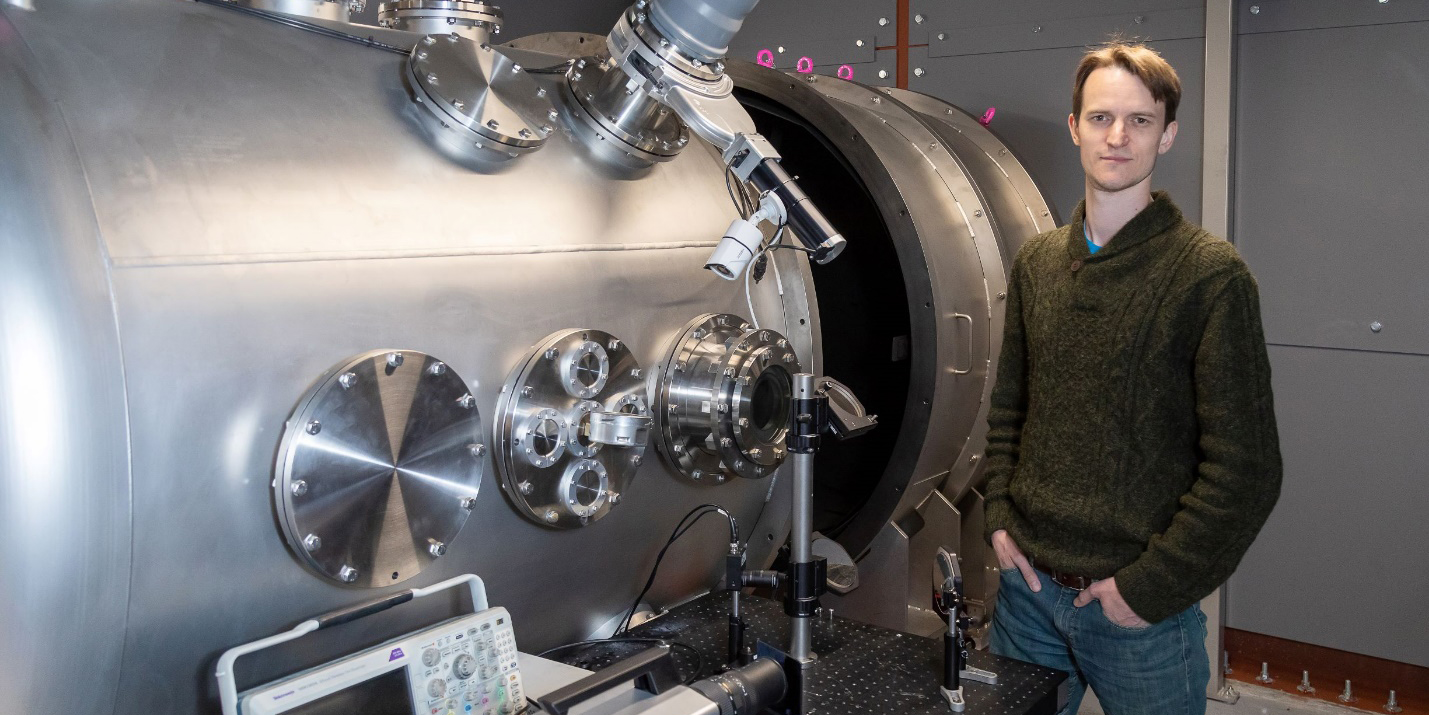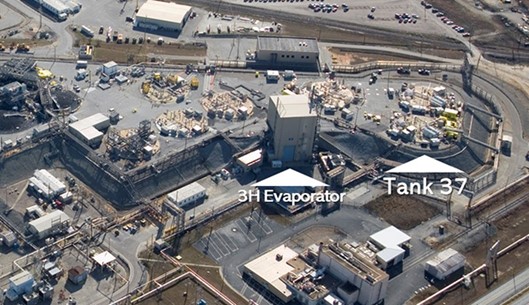PE licensure: Supply power to your career to help power the world

Join ANS on May 21 from 1:00 p.m. to 2:30 p.m. (EDT) for a webinar that provides a deep dive into the Principles and Practice of Engineering (PE) exam. Register now for the webinar.

A message from Electrical Builders, Ind.
America’s Top Performing Nuclear Plants Rely on Electrical Builders, Industries to Expand and Extend the Life of Their Critical Electrical Assets

Join ANS on May 21 from 1:00 p.m. to 2:30 p.m. (EDT) for a webinar that provides a deep dive into the Principles and Practice of Engineering (PE) exam. Register now for the webinar.

Paving the way for increased automation in nuclear decontamination and decommissioning and waste management, French nuclear company Framatome announced that testing has confirmed the operation of its robotic systems for handling and sorting high-dose waste components.

Help ANS celebrate the launch of our newest virtual field trip, “Nuclear Frontiers: Powering Possibility,” by attending tomorrow's online watch party!
The virtual field trip explores the amazing ways that nuclear science is fueling earthly innovation and deep space exploration. The field trip video, which was made available earlier this month, is part of ANS’s Navigating Nuclear: Energizing Our World program The Navigating Nuclear program, which was started in August 2018, has already reached more than 1.5 million K-12 students.
Register now for the watch party for the virtual field trip, to be held tomorrow, May 19, from 1 p.m. to 2 p.m. (EDT).
 Among the 12 energy-mix scenarios analyzed in a new report from the University of Illinois at Urbana-Champaign, maintaining the current Illinois reactor fleet while also investing in advanced nuclear technology and renewable energy is the most economical path to zero carbon for the state. It is also, says the report, the path that generates the lowest lifecycle carbon emissions.
Among the 12 energy-mix scenarios analyzed in a new report from the University of Illinois at Urbana-Champaign, maintaining the current Illinois reactor fleet while also investing in advanced nuclear technology and renewable energy is the most economical path to zero carbon for the state. It is also, says the report, the path that generates the lowest lifecycle carbon emissions.
The 26-page report, Economic and Carbon Impacts of Potential Illinois Nuclear Plant Closures: The Cost of Closures, was coauthored by Kathryn Huff, who was recently appointed principal deputy assistant secretary for nuclear energy at the Department of Energy, along with Madicken Munk, a research scientist in the university’s Nuclear, Plasma, and Radiological Engineering (NPRE) Department, and Sam Dotson, a graduate researcher in NPRE’s Advanced Reactors and Fuel Cycle Analysis group. Financial support for the report was provided by Nuclear Matters.

The Nuclear Regulatory Commission has approved a request by SHINE Medical Technologies for an exemption from regulations on how commercial grade equipment is defined, allowing the company to more easily procure components for the medical isotope production facility it is building in Janesville, Wis.
Nuclear power will remain the dominant source of electricity generation in Bulgaria until 2030, despite the national government’s plans to add a substantial amount of renewable capacity this decade, says GlobalData, a U.K.-based data and analytics company. (According to a national strategy blueprint published on the Bulgarian parliament’s website last year, the country is targeting an additional 2,645 MW of installed capacity from renewable sources by the end of 2030.)

Help ANS celebrate the launch of our newest virtual field trip, “Nuclear Frontiers: Powering Possibility,” which explores the amazing ways that nuclear science is fueling earthly innovation and deep space exploration. The video is part of the Society’s Navigating Nuclear: Energizing Our World program, which has reached more than 1.5 million K-12 students.
Register now for this special event, to be held on Wednesday, May 19, from 1 p.m. to 2 p.m. (EDT).
Achieving global carbon neutrality by 2050—a pledge made by well over 100 countries so far, including Canada, the European Union, Japan, the United Kingdom, and the United States—will require investment in new nuclear capacity and the retention of existing nuclear generation, states an open letter released last Friday by the leaders of six prominent nuclear industry organizations.

Gorman

Desbazeille

Arai

Korsnick

Greatrex

Bilbao y Leon
The letter was signed by John Gorman, president and chief executive officer of the Canadian Nuclear Association; Yves Desbazeille, director general of FORATOM; Shiro Arai, president of the Japan Atomic Industrial Forum; Maria Korsnick, president and CEO of the Nuclear Energy Institute; John Greatrex, chief executive of the United Kingdom’s Nuclear Industry Association; and Sama Bilbao y León, director general of the World Nuclear Association.

Traces of freshly made plutonium and radioactive iron recovered from the bottom of the Pacific Ocean are contributing to an understanding of how heavier elements are created from exploding stars and other cosmic events, according to a National Public Radio report.

Inside a new steel-clad facility nicknamed “The Citadel,” First Light Fusion has installed a 22-meter two-stage gas gun—the third-largest such component in Europe.

EDF has signed a new membership agreement with the United Kingdom’s Nuclear Advanced Manufacturing Research Centre (AMRC) to drive innovation in low-carbon power generation and support U.K. manufacturers, the University of Sheffield–based center announced recently.

A collaboration agreement signed by Ontario Power Generation’s Center for Canadian Nuclear Sustainability, Canadian Nuclear Laboratories, and SNC-Lavalin will build on Ontario’s extensive nuclear industry expertise and skilled workforce to support the decommissioning of CANDU reactors in Canada and around the world, according to a May 13 press release from the organizations. The work will include the decommissioning of OPG’s Pickering nuclear power plant following the end of commercial operations in 2025.

At present, more than 20 commercial nuclear power plants in the United States have entered the decommissioning process, and many indicators point to a coming wave of additional plant closures. Indeed, with increasing numbers of plants terminating operations due to unfavorable market conditions, some voices have deemed this the “age of decommissioning.”
Regardless of whether a plant shuts its doors earlier than anticipated or seeks a life extension through relicensing, all plants eventually close. When they do, the closure sets off a wave of economic impacts ranging from minor disruptions to severe and long-lasting harm.

The American Nuclear Society has named the recipients of six awards that will be presented during the 2021 ANS Virtual Annual Meeting, which begins on June 14. The Society has also named eight new Fellows, who will be honored during the opening plenary session.

Department of Energy contractor Savannah River Remediation (SRR) announced on May 11 that it has completed a salt dissolution campaign in Tank 37, one of the underground tanks storing high-level radioactive liquid waste at the Savannah River Site (SRS) in South Carolina.
 Nuclear News magazine has just released the 52nd annual Buyers Guide. This nuclear directory lists more than 600 companies worldwide in 475 business categories used throughout the nuclear community.
Nuclear News magazine has just released the 52nd annual Buyers Guide. This nuclear directory lists more than 600 companies worldwide in 475 business categories used throughout the nuclear community.
For more than 50 years, this annual directory has been a useful resource for utility professionals and the broader nuclear community to find the products, services, and partners needed for their next project. In addition to industry use, the Buyers Guide (and the monthly issues of Nuclear News) serves the nation’s nuclear engineering programs and are delivered to the 10,000 members of the American Nuclear Society. This special issue helps keep the current and future workforce and industry leaders informed about vendors and their areas of expertise, as well as about the ongoing projects and new innovations and technologies being used throughout all segments of the nuclear industry.

Hargraves
Atomic fission can provide all the world’s people with as much emission-free electricity as they need for prosperity, but the cost of nuclear energy has risen due to excessive regulations that have been enacted in reaction to the general public's excessive fear of radiation. That’s according to Robert Hargraves, who teaches energy policy at Dartmouth’s Osher Lifelong Learning Institute and is a cofounder of nuclear engineering company ThorCon International.
In an article published by RealClearEnergy, Radiation: More Terrifying Than Night Air?, Hargraves posits that many people fear radiation because they don’t understand it, much like Americans who believed until the 20th century that night air was poisonous.

Bostelman
Companies that build advanced nuclear reactors in Nebraska would be eligible for tax incentives should a measure now being considered by that state’s lawmakers, Legislative Bill 84, become law.
Under L.B. 84, sponsored by Sen. Bruce Bostelman (R., 23rd Dist.), a renewable energy firm that uses nuclear energy to produce electricity could take advantage of the ImagiNE Nebraska Act—a business tax incentive program signed into law by Gov. Pete Ricketts in August of last year. The bill adds “nuclear electric power generation” to the act’s list of renewable energy sources qualifying for incentives. (Sources already listed in the act include wind, solar, energy storage, geothermal, hydroelectric, biomass, and transmutation of elements.)

Utah-based EnergySolutions has entered into a definitive agreement with Dominion Energy to acquire the closed Kewaunee nuclear power plant for prompt decommissioning. Located about 30 miles southeast of Green Bay, Wis., the single-unit, 574-MWe pressurized water reactor was shut down in May 2013 for financial reasons.

Gianforte

Skees
Montana governor Greg Gianforte last week signed into law H.B. 273, which transfers the power to authorize the construction of nuclear power facilities in the state from the public, via referendum, to the legislature. The new measure overturns the Montana Empowering Voters to Approve Proposed Nuclear Facilities Initiative, which had been on the books since 1978.
Sponsored by Rep. Derek Skees (R., Kalispell), H.B. 273 passed in the Montana Senate on April 15 by a vote of 30–20, following a 68–32 nod from the House in February. Both votes were cast largely along party lines, with Republicans in favor and Democrats opposed.